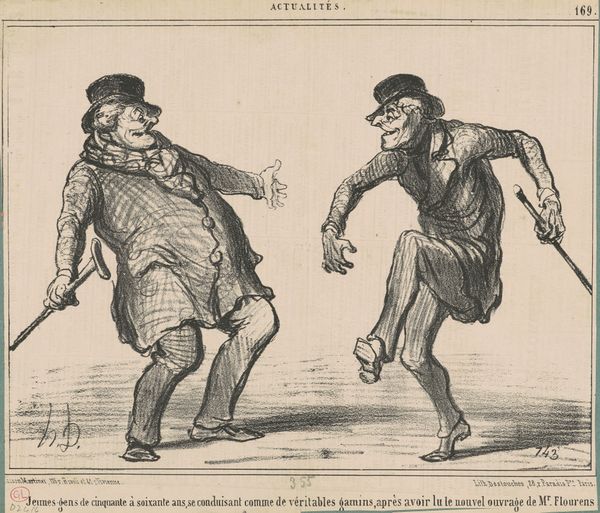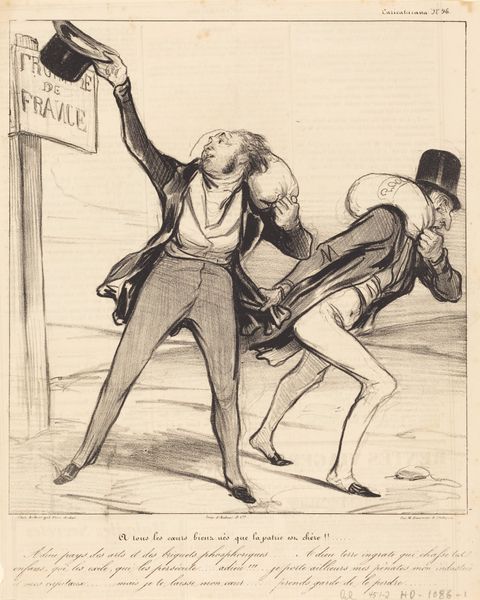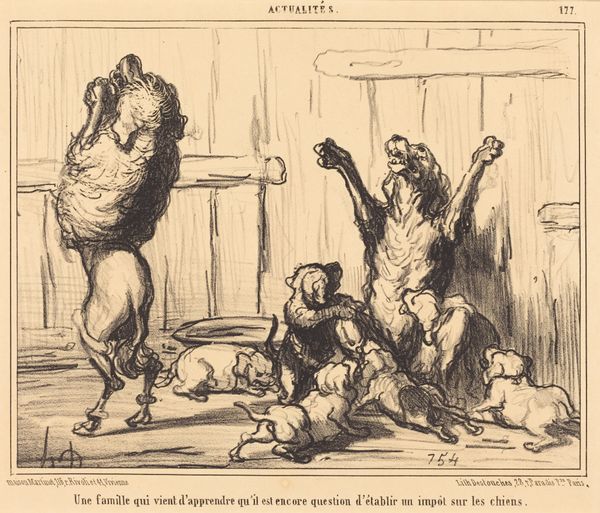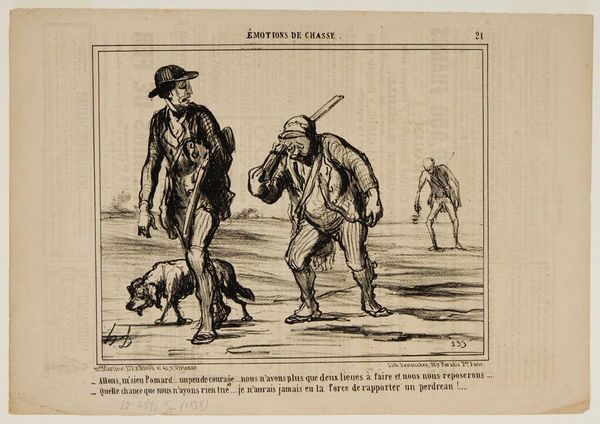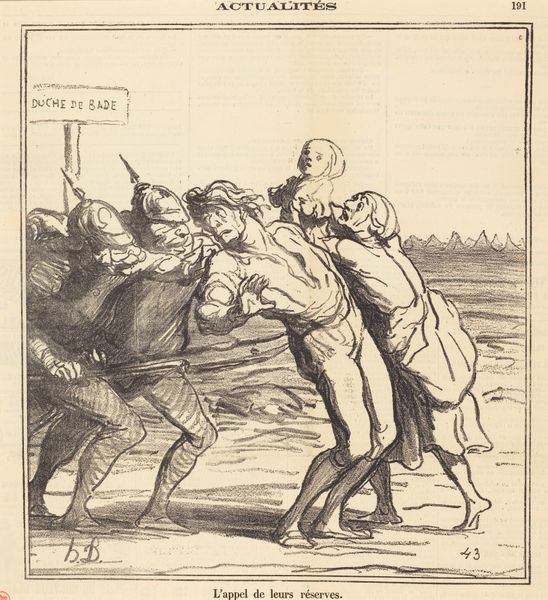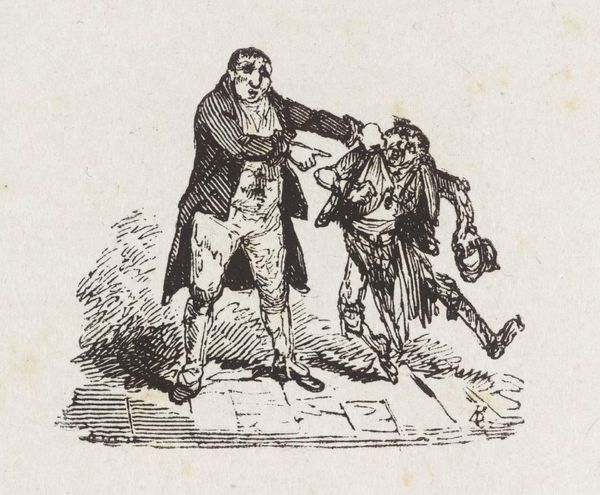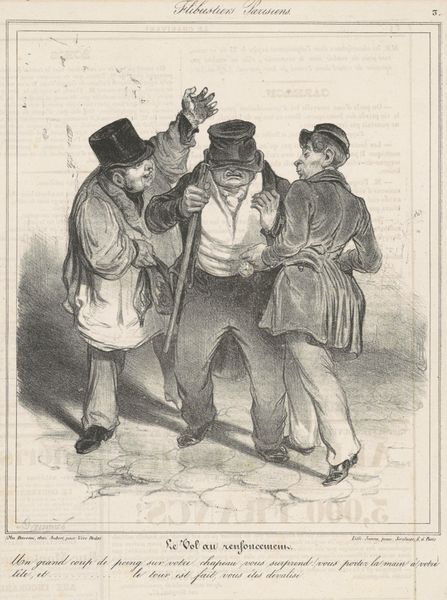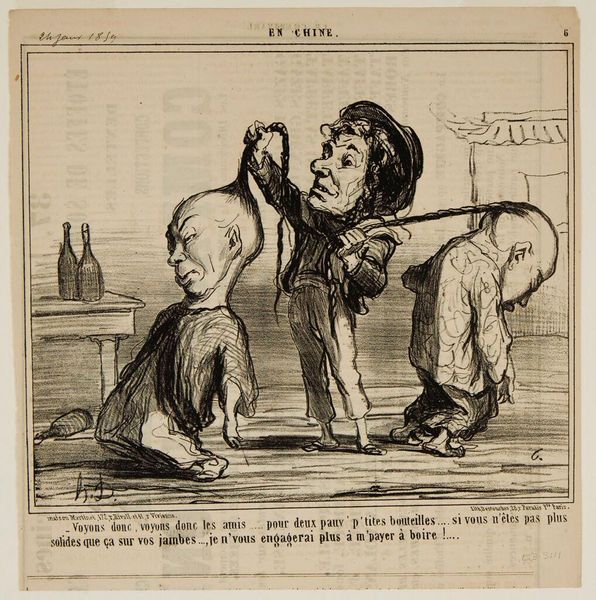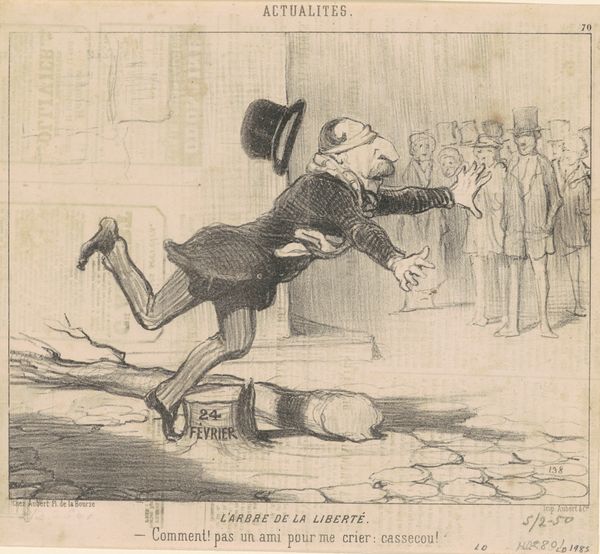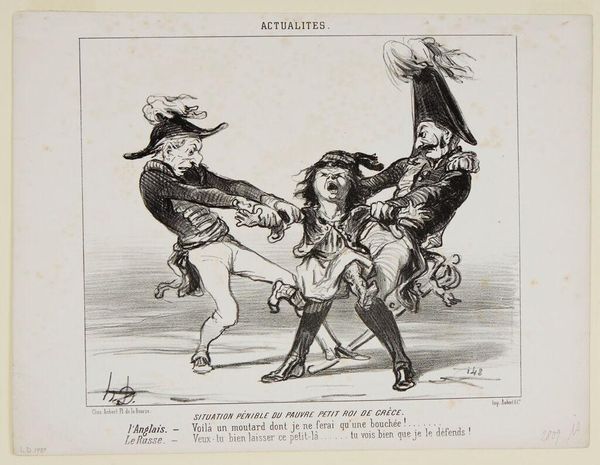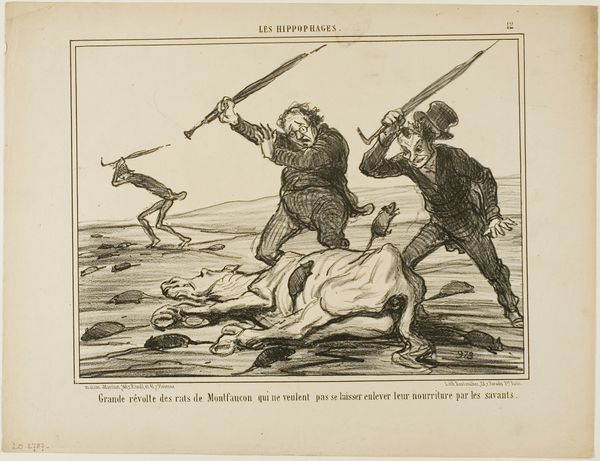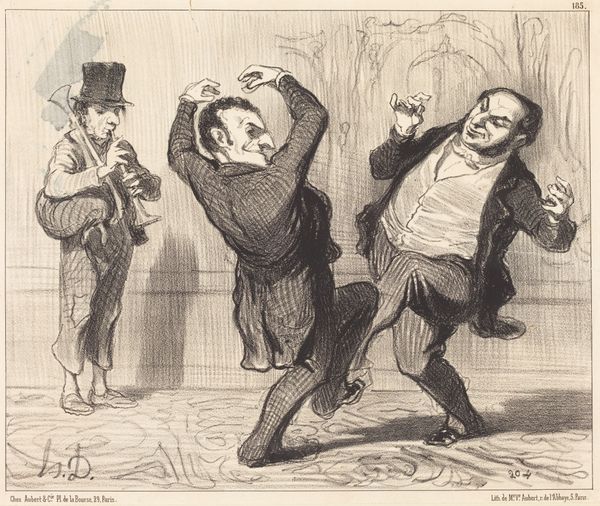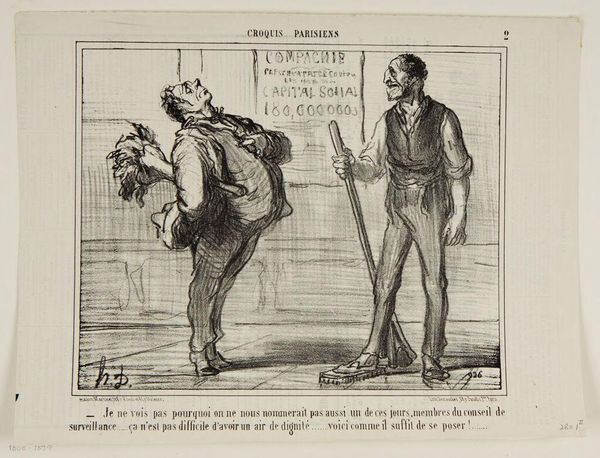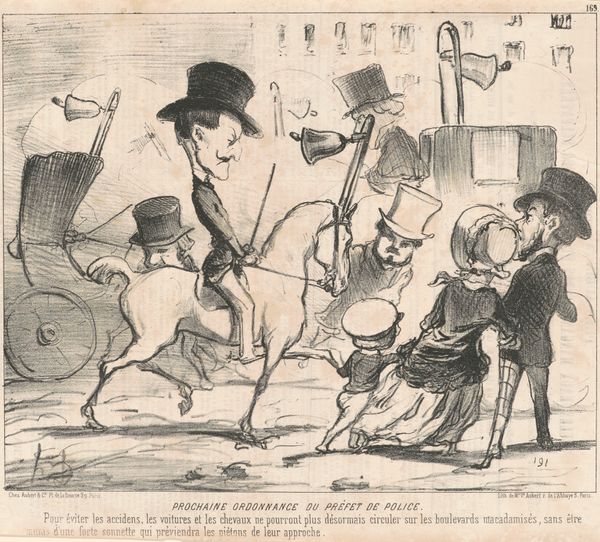
Copyright: National Gallery of Art: CC0 1.0
Curator: Allow me to introduce Honoré Daumier’s 1856 lithograph, “Facheux résultat... de la viande de cheval,” or "Awkward result... of eating horse meat." Editor: Oh my, that’s quite the scene. It strikes me immediately with its agitated composition. The lines are so frenetic, full of nervous energy. It’s as if the lithograph itself is mirroring the indigestion it depicts. Curator: Indeed. Daumier masterfully uses lithography to achieve a dramatic effect. The contrast of light and shadow, particularly on the figures' contorted faces, accentuates the grotesque quality. Structurally, it is a classic tripartite composition, with the foreground figure pulling the viewer in, connected with the comical figure mounting him, concluding in the upper left by yet another one that completes the visual structure and reinforces the subject: the contemporary concern for low-quality food, in this case, horse meat. Editor: Thinking about the materials, that lithographic stone would have been treated in such a way to allow greasy ink to stick on parts of the stone to create such dark and shadowy features. The printing process was still pretty nascent. What does it mean when lithographs like this enter circulation and what kind of visual world does it make? Curator: Considering the context, you bring up an insightful point about circulation. Lithography enabled affordable mass production, expanding the audience for social and political commentary. The formal qualities support the print's role as a visual broadside, making his critique extremely immediate and accessible. Daumier certainly chose the best method to spread the message as far as he could. Editor: I’m struck by the physicality represented in the scene – the literal weight of one figure bearing down upon another, the instability of the figure lashing out. I find it quite disturbing, and even the class dimensions seem very present in how the suits constrain everyone. I am curious to think about how Daumier made the image at the level of materials as well, from paper and crayon to printing press. How the working process became its own reflection on everyday life. Curator: I appreciate your focus on the social and material conditions, even in caricature. Viewing Daumier through that lens offers a critical view of his lasting contributions to visual culture and political awareness. Editor: Precisely, it really grounds the aesthetics in its historical reality, inviting a fuller understanding of the anxieties he reflected and the power of his art to address them.
Comments
No comments
Be the first to comment and join the conversation on the ultimate creative platform.
